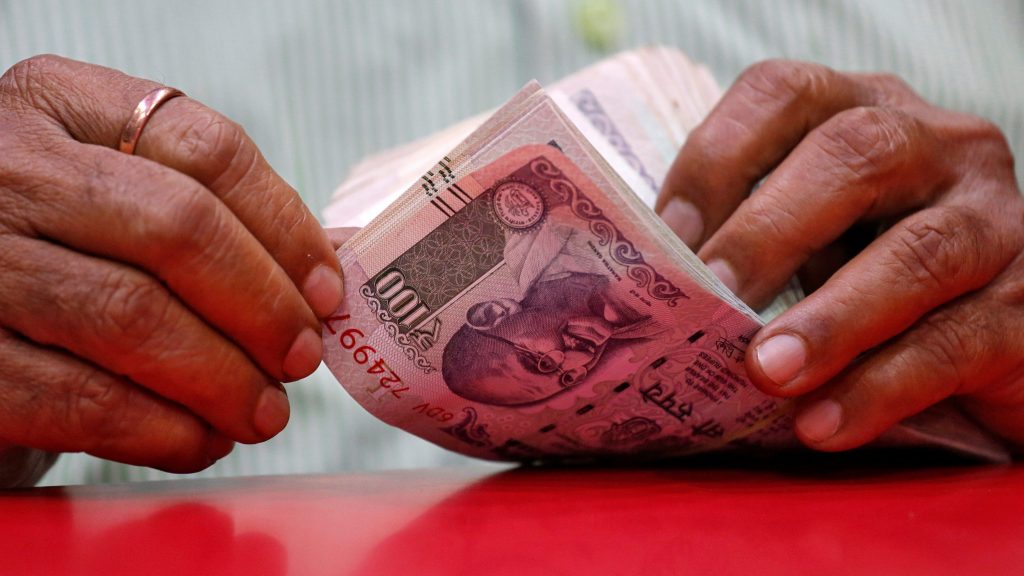Amarendra Das
The COVID-19 pandemic has posed serious fiscal challenges before the Union and state governments. Keeping in view the slowdown of GDP/GSDP growth rates, states were ready to embrace a significant revenue contraction and explore ways to finance a large deficit. In order to cope up with the fiscal shock, the Union Finance Minister had relaxed the Fiscal Responsibility and Budget Management Rules and allowed states to borrow extra two per cent of GSDP. State governments were allowed to incur up to five per cent fiscal deficit from the normal time target of three per cent of GSDP. The state governments fought hard with the Union government to avail the promised GST compensation at any cost. At the end of the fiscal year 2020-21, let’s see how the states have managed their finances.
For most of the states, the monthly data provided by the CAG is available up to February 2021. Only for a few states is it available up to October (Arunachal Pradesh) or December (Assam and Bihar). Among all states, only Arunachal Pradesh, Assam, Himachal Pradesh, Jharkhand, Odisha, and Uttarakhand had recorded revenue surplus, and all other states had revenue deficits. All states have recorded fiscal deficits at different levels. Among the states with a registered revenue surplus, data is not available up to February for two states. Among the rest four states, Odisha is the largest and has a maximum revenue surplus. Therefore, I focus on Odisha for a detailed fiscal analysis during 2020-21.
Before we get into a detailed fiscal analysis, we should know the relative economic position of the state vis-à-vis the national level. In 2019, Odisha’s per capita GSDP at `1, 12, 907 was 80 per cent of the national average of `1, 40, 422. The tax GSDP ratio of the state was 6.2 per cent against the national average of 6.3 per cent. The state government has proposed to spend `1,50,000 core during 2020-21. The state government had `6,500 crore off-budget resources under multiple sources like the Odisha Mineral Bearing Area Development Corporation, District Mineral Fund, state PSUs during 2020-21. By February 2021, the state had spent only `91,808.96 crore against the total expenditure of `1,03,425.18 crore by February 2020, which is an 11.2 per cent reduction in total spending.
Surprisingly, during the time of a major socio-economic crisis caused by the pandemic, Odisha has chosen to maintain revenue surplus and reduce the fiscal deficit compared to last year. By the end of February 2021, Odisha had `5,435.76 crore revenue surplus compared to `3,346.44 crore during February 2020. The fiscal deficit of Odisha fell to `7,664.58 crore in February 2021 from `13,968.96 crore in February 2020. What does it imply for a poor state like Odisha?
Did Odisha mobilise more revenue during the pandemic to maintain a higher revenue surplus and reduce the fiscal deficit? Compared to the previous year, Odisha’s total revenue receipts have fallen by 5.8 per cent from `90,288.70 crore in February 2020 to `85,019.23 crore in February 2021. Tax revenue has fallen by 8.6 per cent from `54601.49 crore in February 2020 to `49924.88 crore in February 2021. GST collection has fallen by 4.1 per cent. Stamps and registration fees have gone up by 95 per cent. Land revenue collection has gone up by 10.6 per cent. Sales tax has fallen by 1.6 per cent. State excise duty collection has fallen by 16.4 per cent. State’s share in the Union Taxes has fallen the most by 21.5 per cent. Collection of other taxes has gone up by 19.4 per cent compared to the situation in February 2020. Overall, non-tax revenue collection has gone up by 21.5 per cent, in which grants-in-aid has fallen by 14.6 per cent. The borrowing and other liabilities of the state have fallen by 45 per cent.
The state has reduced the revenue expenditure by 8.5 per cent and capital expenditure by 25.8 per cent. In sectoral spending, the state has reduced the social sector expenditure spending by 15.6 per cent and economic sector spending by 14 per cent compared to February 2020.
For a long time, Odisha has been over-complying with the Fiscal Responsibility and Budget Management Act by maintaining revenue surplus and also fiscal surplus in a few years. For a poor state like Odisha, how far is this
fiscal over-discipline wise? The state had a poverty rate of 32.6 per cent in 2011–12 (Tendulkar methodology) compared to the national average of 21.92 per cent. Of the 30 districts of the state, 10 are recognised as aspirational districts by the NITI Aayog. As per the ranking on the SDG Index of the NITI Aayog (2019), Odisha ranked 16th among Indian states. The state needs to improve its performance in 10 out of 17 indicators, namely on SDG–1 No Poverty, SDG–2 Zero Hunger, SDG–3 Good Health and Wellbeing, SDG–4 Quality Education, SDG–6 Clean Water and Sanitation, SDG–7 Affordable and Clean Energy, SDG–8 Decent Work and Economic Growth, SDG–9 Industry, Innovation and Infrastructure, SDG–11 Sustainable Cities and Communities, and SDG–16 Peace, Justice, and Strong Institutions.
The 15th Finance Commission, in its state-specific recommendation, has suggested the Odisha government “take decisive steps to break the low-income trap and improve social outcomes. But it is hard to understand why the state government prefers to be fiscally prudent and remain socially bankrupt.”
The writer is Reader-F (Economics), NISER Bhubaneswar.
